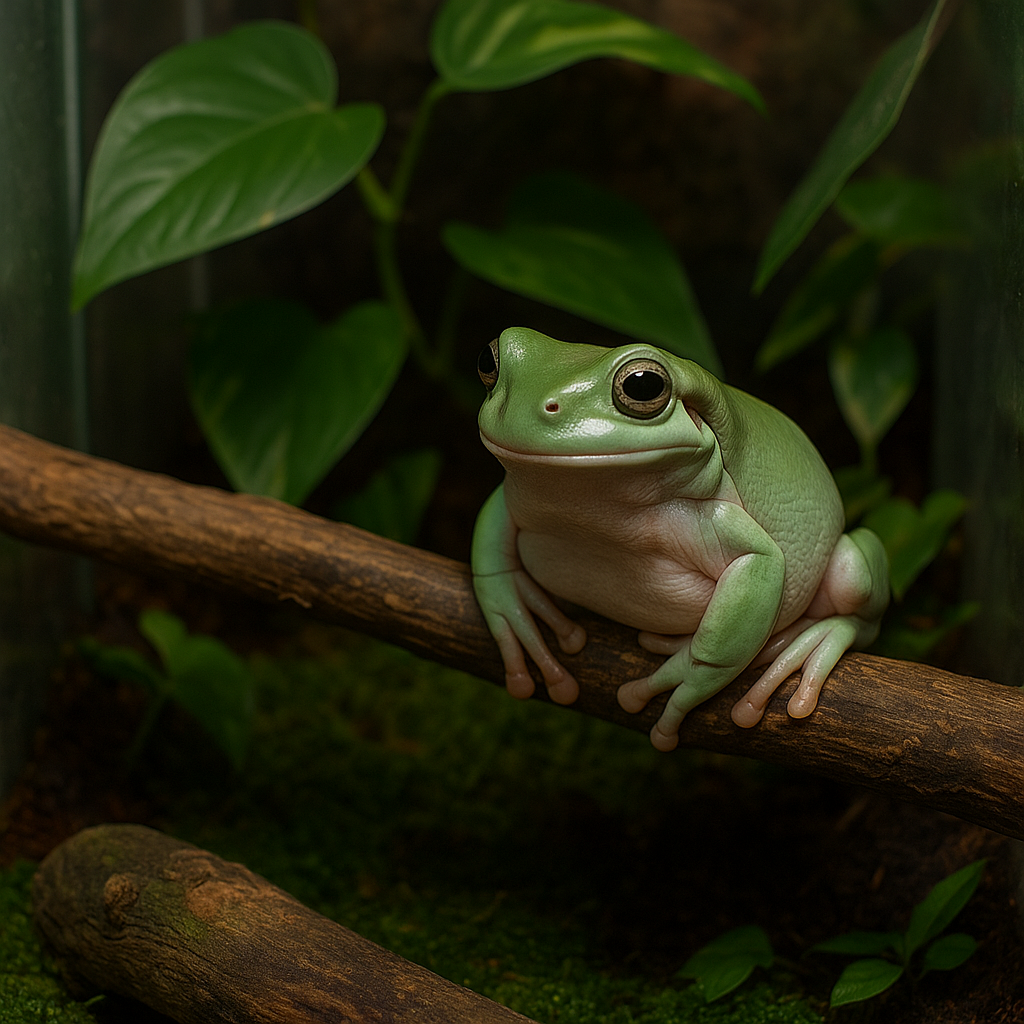So, you’ve got your eye on dart frogs—those colourful, toxic little bundles of energy. Maybe you’ve got tadpoles growing fast or froglets newly morphed out of the water. That’s where a grow-out tub comes in. It’s the bridge between being a bubble-headed swimmer and a confident land-hopper.
Getting this stage right is absolutely crucial. This is when young dart frogs are most vulnerable. Too wet? You’ll get infections. Too dry? You’ll get crispy frogs. No ventilation? Say hello to fungus. It’s a fine balance—but with the right setup, it’s dead easy.
What is a Grow-Out Tub?
It’s a temporary enclosure designed to raise froglets from their first few hops out of the water up to juvenile size—roughly 3–4 months depending on species. It’s not fancy, but it needs to be functional, bioactive-friendly, and safe.
Grow-Out Essentials
- Humidity: Keep it steady at 80–100%. Mist lightly twice a day.
- Ventilation: Too little and you’ll get mould. Too much and you’ll dry them out. That’s why our 3D printed enclosures have tuned venting.
- Size: Around 20–30cm in footprint is ideal. Small enough to monitor, large enough to roam.
- Visibility: For daily checks and peace of mind.
Recommended Enclosure
The 25x30x25cm Sliding Door Vivarium is our go-to. It’s escape-proof, ventilated in all the right places, and looks great on your frog rack.
Substrate and Microfauna
Don’t skip the cleanup crew. Even in a grow-out tub, springtails and isopods help manage waste. Use a thin layer of ABG mix or similar, top it with moss, bark chips, and leaf litter.
Enrichment and Hides
Give them things to climb and hide under. Bromeliad leaves (real or printed) work wonders. We even offer 3D printed egg-laying sites and mounts that double as hiding spots for young frogs.
Feeding Froglets
Small frogs = small meals. Your go-to feeders are melanogaster fruit flies, springtails, and occasionally micro crickets. Dust with calcium a few times a week and multivitamin once weekly.
Top Tips
- Label tubs by hatch date
- Group frogs by size, not age
- Open lids daily for airflow—even with vented designs
- Don’t overwater—aim for damp, not soggy
Raising dart frogs in the UK can be incredibly rewarding—and it starts with smart housing. Browse our 3D printed vivarium collection and get your froglets set up right from day one.



